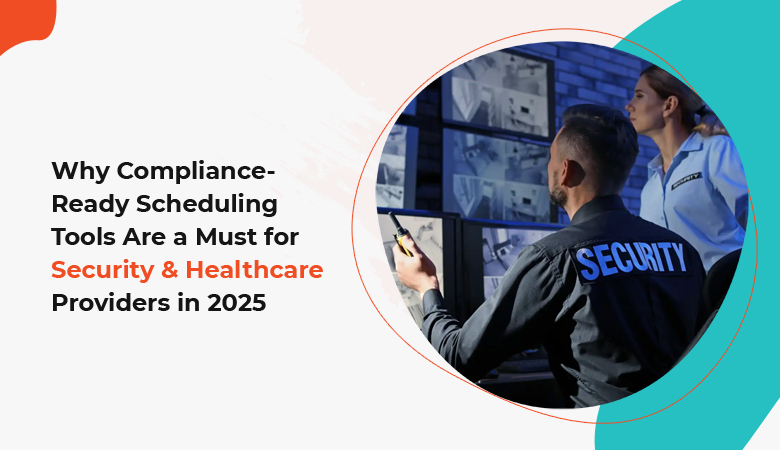Blog Posts


 By gigflexadmin
By gigflexadmin
 no comment
no comment
In 2025, home healthcare and security companies face pressure like never before not only to provide an outstanding service but to demonstrate it through compliance. Compliance can be either HIPAA in the United States healthcare industry or local labor laws in the security solutions industry, and it is not a thing that can be easily ticked by a company–it is a pillar of operation integrity.
However, what most organizations are yet to realize is the fact that your scheduling software can either make or break your compliance strategy.
Regulations have become stricter, not looser. For instance:
One scheduling mistake—say, booking an unlicensed nurse or double-scheduling a guard past their maximum allowed hours—can lead to fines, audits, and even contract losses.
So how do you stay ahead? The answer lies in a compliance-aware scheduling system.
A compliance-ready scheduler does more than fill shifts. It’s built with regulatory intelligence—automating checks, alerts, and documentation to help you stay audit-ready at all times.
Here’s what to look for:
Only schedule licensed, certified personnel—automatically. A good tool integrates credential checks into shift assignments and flags expirations in advance. notifying the worker to update their credentials in the system.
For security and healthcare providers governed by fair workweek laws, the tool must:
Smart schedulers should prevent fatigue-related non-compliance by:
When regulators come knocking, a compliance-ready system lets you pull detailed reports instantly—from scheduling history to shift changes, approvals, and credential matches.
Trying to stay compliant using spreadsheets, calls, and paper logs? It’s not just time-consuming—it’s risky.
Let’s be real: manual scheduling can’t track compliance at scale. You’re always a step behind, reacting to errors instead of preventing them.
In contrast, platforms like GigFlex bake compliance into the process, enabling:
The result? Fewer violations, faster audits, and stronger contracts.
In both healthcare and security sectors, penalties for non-compliance range from $10,000 to $1.5 million, depending on severity.
Beyond fines, consider what else is at stake:
Switching to a compliance-ready platform isn’t just about risk—it’s also about retaining staff, serving clients better, and scaling with confidence.
Use this quick checklist to assess if your current system meets 2025’s compliance expectations:
| Feature | Legacy Tools | Geo-Intelligent Scheduling Platform |
| License & certification tracking | ❌ | ✅ |
| Real-time alerts for violations | ❌ | ✅ |
| Digital audit trail for inspections | ❌ | ✅ |
| Fair scheduling compliance | ❌ | ✅ |
| Location-aware staff deployment | ❌ | ✅ |
| Shift change approvals & logs | ❌ | ✅ |
Today, clients do not demand service anymore, they demand security, transparency, and compliance. In the field of home healthcare, patient outcomes are directly connected to someone arriving to work at a shift.
By adopting compliance-ready scheduling, you will have more than just a rule to obey, you will be indicating that your organization is:
That kind of trust leads to stronger partnerships, better contracts, and ultimately, better care or protection delivered on the ground.
If you’re still relying on outdated tools, now’s the time to rethink your scheduling approach. A geo-intelligent scheduling platform like GigFlex isn’t just about managing shifts—it’s about managing risk, performance, and compliance in real time.
In 2025, compliance isn’t optional—and your scheduling software shouldn’t be either.